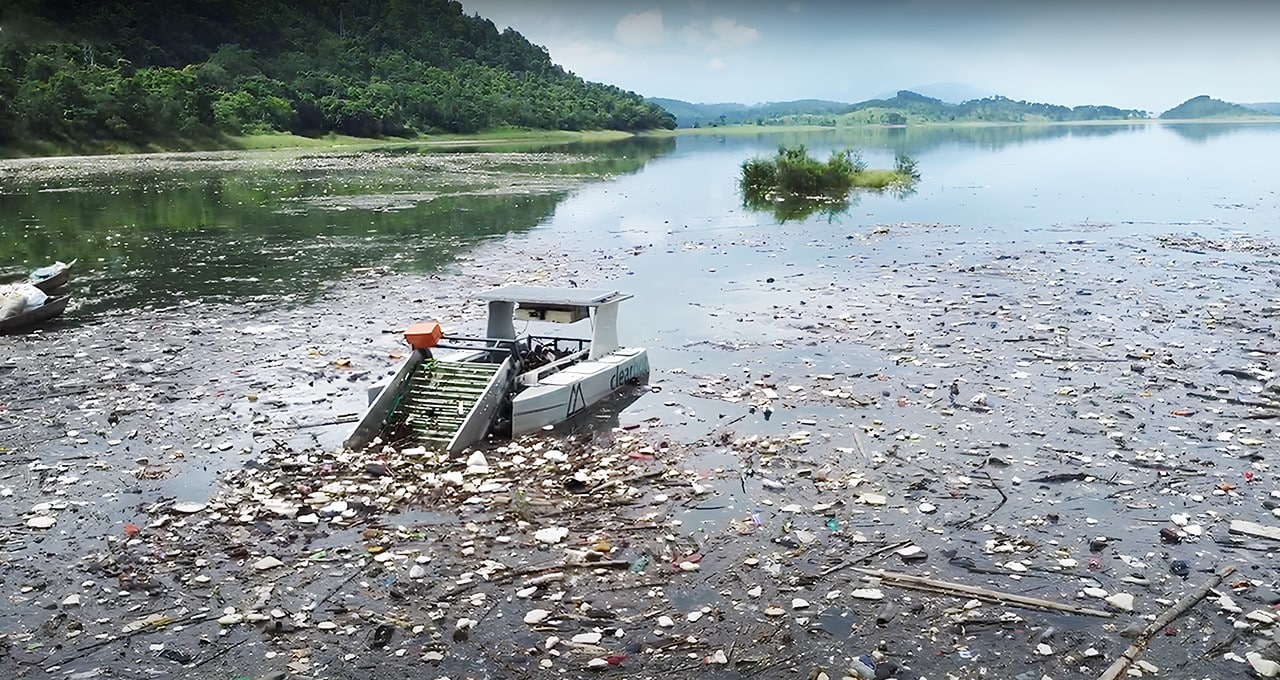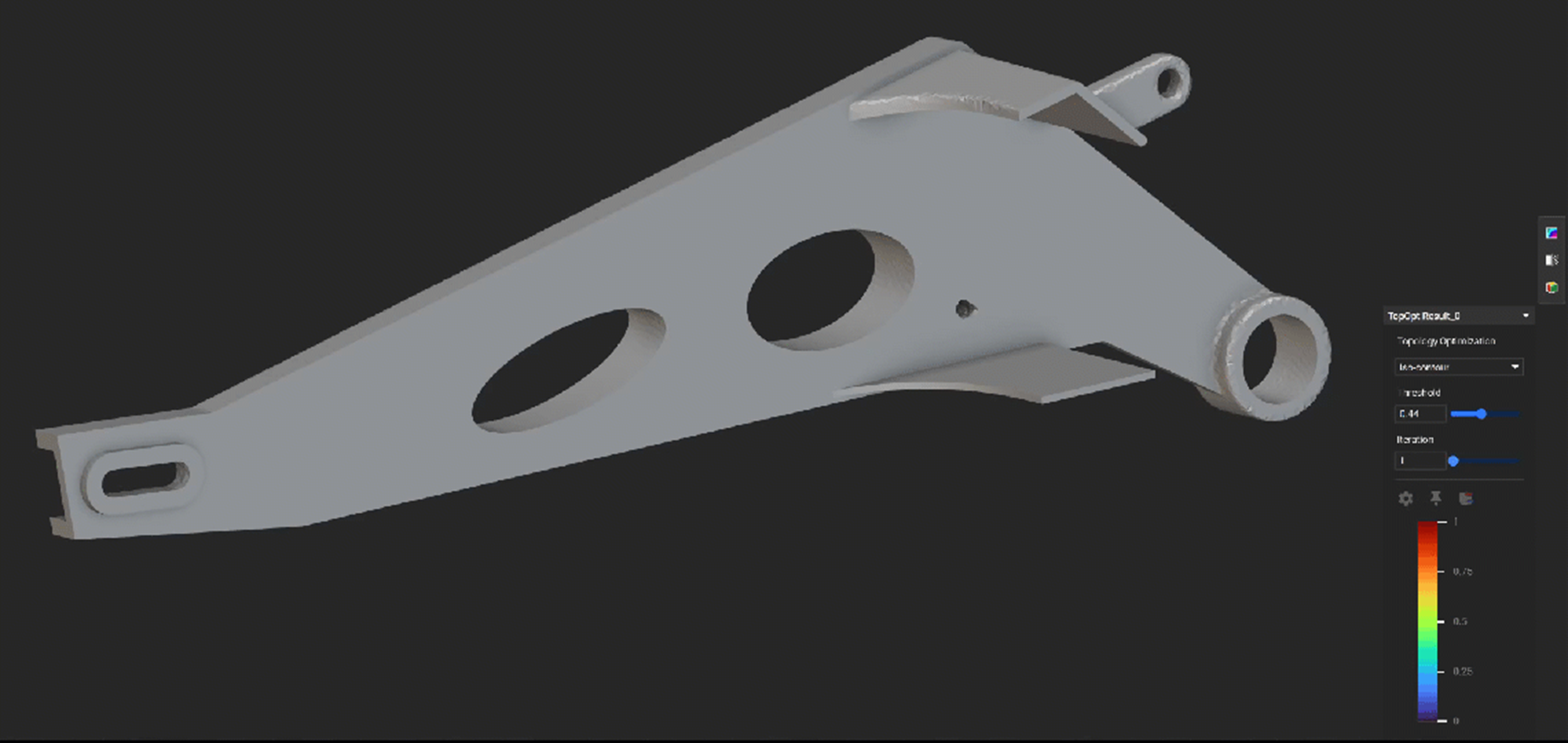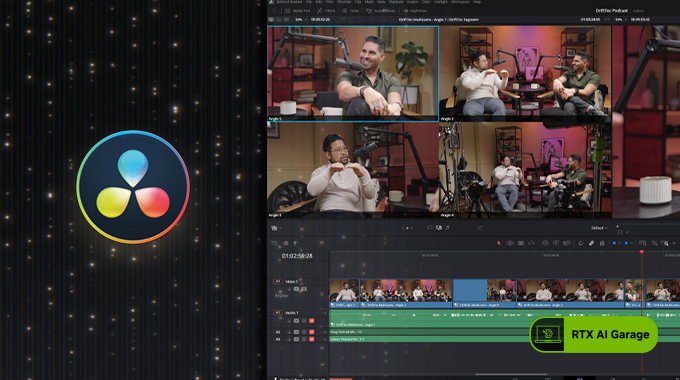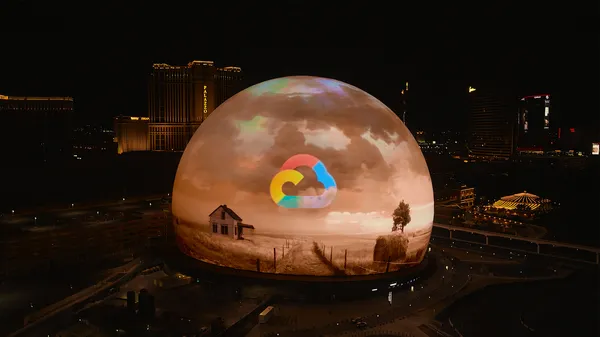
What started as two classmates seeking a free graduation trip to Bali subsidized by a university project ended up as an AI-driven sea-cleaning boat prototype built of empty water bottles, hobbyist helicopter blades and a GoPro camera.
University of Hong Kong grads Sidhant Gupta and Utkarsh Goel have since then made a splash with their Clearbot autonomous trash collection boats enabled by NVIDIA Jetson.
“We came up with the idea to clean the water there because there are a lot of dirty beaches, and the local community depends on them to be clean for their tourism business,” said Gupta, who points out the same is true for touristy regions of Hong Kong and India, where they do business now.
Before launching Clearbot, in 2021, the university friends put up their proof-of-concept waste collection boat on a website and then just forgot about it, he said, starting work after graduation. A year later, a marine construction company proposed a water cleanup project, and the pair developed their prototype around the effort to remove three tons of trash daily from a Hong Kong marine construction site.
“They were using a big boat and a crew of three to four people every day, at a cost of about $1,000 per day — that’s when we realized we can build this and do it better and at lower cost,” said Gupta.
Plastic makes up about 85% of ocean litter, with an estimated 11 million metric tons entering oceans every year, according to the United Nations Environment Programme. Clearbot aims to remove waste from waterways before it gets into oceans.
Cleaning Waters With Energy-Efficient Jetson Xavier
Clearbot, based in Hong Kong and India, has 24 employees developing and deploying its water-cleaning electric-powered boats that can self-dock at solar charging stations.
We believe that humanity’s relationship with the ocean is sort of broken — the question is can we make that better and is there a better future outcome? We can do it 100% emissions-free, so you’re not creating pollution while you’re cleaning pollution. Sidhant Gupta, co-founder of Clearbot
The ocean vessels, ranging in length from 10 to 16 feet, have two cameras — one for navigation and another for waste identification of what boats have scooped up. The founders trained garbage models on cloud and desktop NVIDIA GPUs from images they took in their early days, and now they have large libraries of images from collecting on cleanup sites. They’ve also trained models that enable the Clearbot to autonomously navigate away from obstacles.
The energy-efficient Jetson Xavier NX allows the water-cleaning boats — propelled by battery-driven motors — to collect for eight hours at a time before returning to recharge.
Harbors and other waterways frequented by tourists and businesses often rely on diesel-powered boats with workers using nets to remove garbage, said Gupta. Traditionally, a crew of 50 people in such scenarios can run about 15 or 20 boats, estimates Gupta. With Clearbot, a crew of 50 people can run about 150 boats, boosting intake, he said.
“We believe that humanity’s relationship with the ocean is sort of broken — the question is can we make that better and is there a better future outcome?” said Gupta. “We can do it 100% emissions-free, so you’re not creating pollution while you’re cleaning pollution.”
Customers Harnessing Clearbot for Environmental Benefits
Kingspan, a maker of building materials, is working with Clearbot to clean up trash and oil in rivers and lakes in Nongstoin, India. So far, the work has resulted in the removal of 1.2 tons of waste per month in the area.
Umiam Lake in Meghalaya, India, has long been a tourist destination and place for fishing. However, it’s become so polluted, that areas of the water’s surface aren’t visible with all of the floating trash.
The region’s leadership is working with Clearbot in a project with the University of California Berkeley Haas School of Business to help remove the trash from the lake. Since the program began three months ago, Clearbot has collected 15 tons of waste.
Mitigating Environmental Impacts With Clearbot Data
Clearbot has expanded its services beyond trash collection to address environmental issues more broadly. The company is now assisting in marine pollution control for sewage, oil, gas and other chemical spills as well as undersea inspections for dredging projects, examining algae growth and many other areas where its autonomous boats can capture data.
Unforeseen to Clearbot’s founders, they have discovered that the data about garbage collection and other environmental pollutants can be used in mitigation strategies. The images that they collect are geotagged, so if somebody is trying to find the source of a problem, backtracking from Clearbot’s software dashboard on some of the data on findings is a good place to start.
For example, if there’s a concentration of plastic bottle waste in a particular area, and it’s of a particular type, local agencies could track back to where it’s coming from. This could allow local governments to mitigate the waste by reaching out to the polluter to put a stop to the activity that is causing it, said Gupta.
“Let’s say I’m a municipality and I want to ban plastic bags in my area — you need the NGOs, the governments and the change makers to acquire the data to back their justifications for why they want to close down the plastic plant up the stream,” said Gupta. “That data is being generated on board your NVIDIA Jetson Xavier.”
Learn about NVIDIA Jetson Xavier and Earth-2
Blog Article: Here





